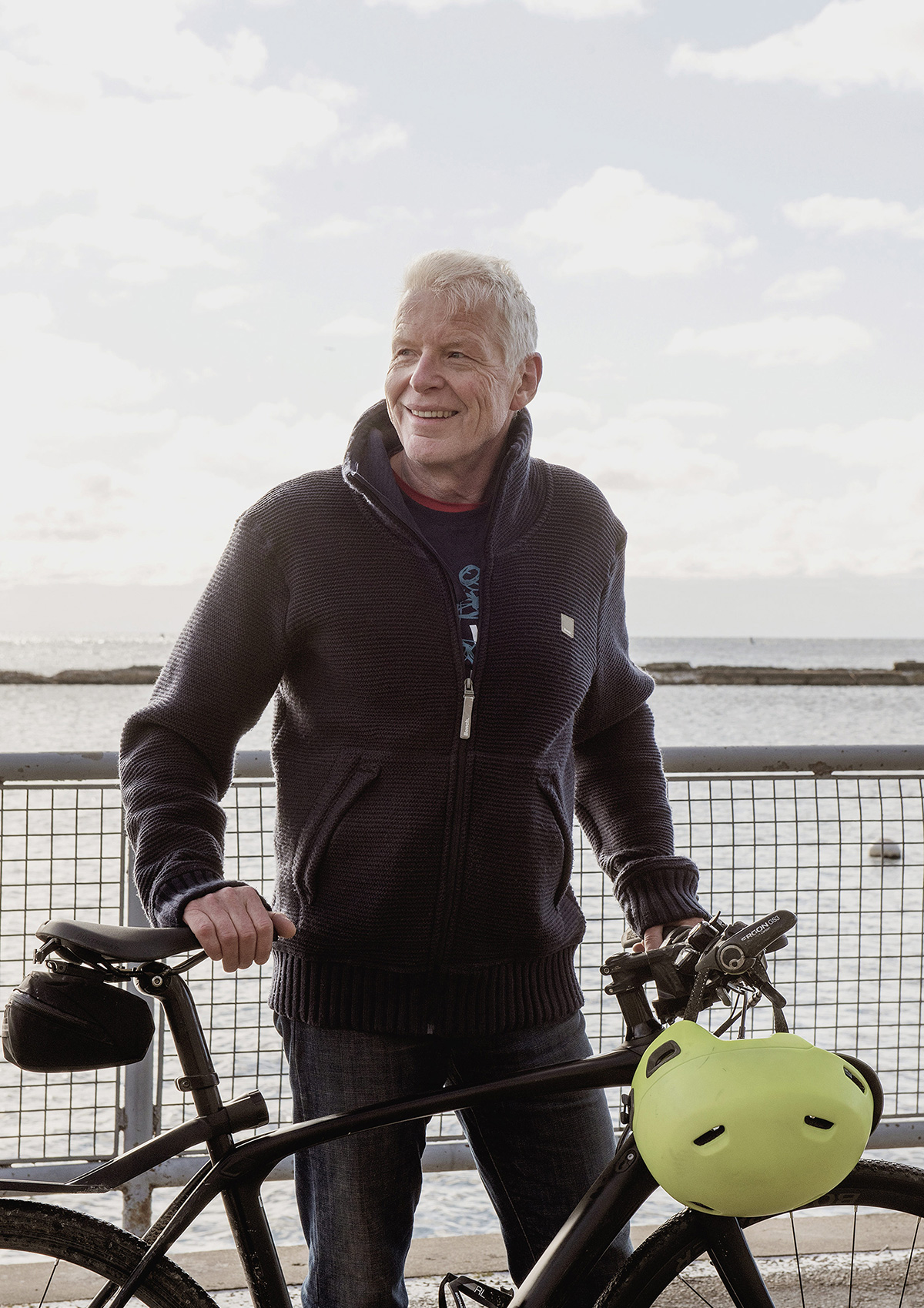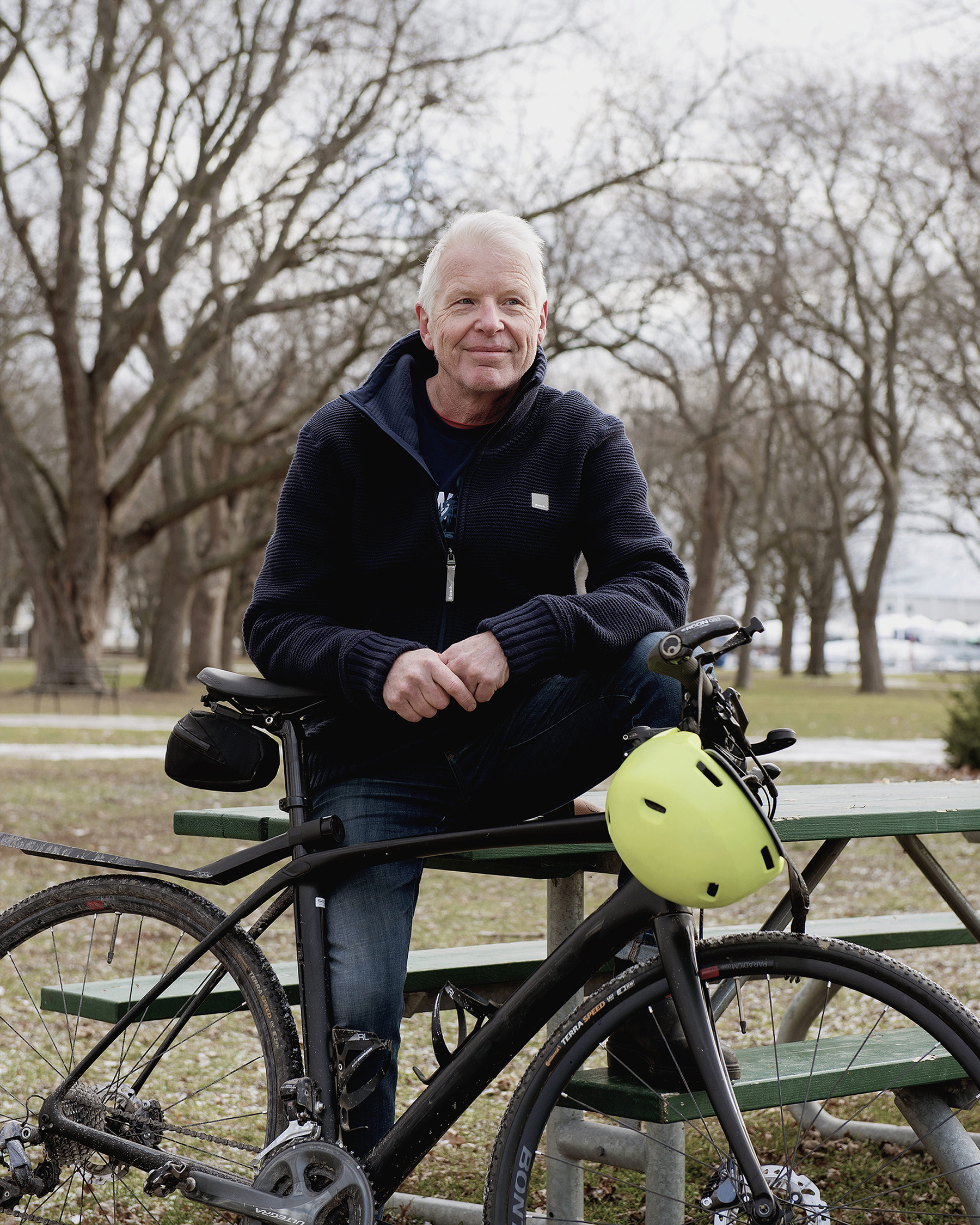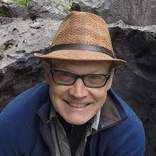On the first day of a University of Toronto course about healthy living, Doug Richards puts a simple-sounding question to the class: what is the most common cause of death in Canada?
One student pipes up: “heart disease?” Another says, “cancer.”
“Well, that’s the pathologist’s perspective,” says Richards, an associate professor, teaching stream, at the Faculty of Kinesiology and Physical Education. “But if you ask a sociologist, they’re probably going to say the answer is poverty. If you ask a psychologist, they might say social isolation. If you ask a professor of kinesiology, they’ll probably tell you, as I would, that one factor looms huge and nothing else comes close: lack of physical activity.”
So which is the correct answer? “It depends on your perspective.”
This class about the body is also a workout for the mind. It gets students to think critically about health claims – to question sources and context. Offered by the Faculty of Kinesiology and Physical Education and recently opened to arts and science students, the course dips into topics as diverse as cardiovascular health, gender and sexuality, nutrition and substance use. It bores deep into the determinants of health, and the interrelationships among them.
Over the term, students learn to systematically test the strength of the health claims flying at them through cyberspace. (“Eating raspberries lowers your risk of heart disease” … says Big Raspberry. Hmm.) They develop rigour and nuance in their investigation strategies. They learn to sniff out logical fallacies and statistical sleight of hand – like correlation posing as causation. They even conduct a study of themselves, plotting their physical activity on a “dose response curve,” counting the calories they burn and interrogating their own methodology.
In short, they learn to question everything – even what’s coming out of the teacher’s mouth. “Just because I’m a professor, doesn’t mean you should take everything I say as gospel,” Richards will tell them. “Check me out. Keep me honest.”
By the end, students have developed the reflex to continually ask themselves: “How are my personal choices related to one another? And what is the social context they’re happening in? What are the trickle-down effects of my choosing to drive today instead of walk, or grabbing a cheeseburger on the fly – not just on myself but on the world? And who or what nudged me to make those choices in the first place?
Everything, they learn, is connected to everything else.

Richards is a clinical sport physician and biomechanist best known, perhaps, as a former team doctor of the Toronto Raptors. Back in the 1970s, when he was in medical school, the public understanding of health was largely a mechanistic one. The human body was a machine with a mind riding on top of it, removed and imperious. What happened from the neck down stayed from the neck down. We’ve since learned that mind and body are so intimately connected it makes more sense to think of them as a single entity.
The course has evolved to reflect this new understanding. We no longer think of “health” as just the absence of disease; it’s about our ability to function and to participate fully in the one rodeo we get. “If you can’t rock and roll – if you can’t enjoy recreation and dancing and all the things that make the world turn – then you’re not ‘well,’” Richards says.
It’s little wonder that the course (nicknamed “Sex, Drugs and Rock ‘n Roll) consistently scores among the highest ratings of any offered at U of T. “What’s great about this course is that it’s applicable to your everyday life,” says Maryem Shaker, a third-year kinesiology student.
While the material is inherently interesting, everyone agrees that the straw that stirs the drink is Richards himself.
He is perpetually in performance mode, roaming the aisles like a talk-show host, jumping up on things. Sometimes there is dancing. “I’ll tell you: nobody falls asleep in this course,” Richards says. “Students leave with a grin on their face. And it’s not because I’m cracking jokes. Although I have perfected many dad jokes.”
The shenanigans, though, are always in service of the pedagogy.
“If he thinks of a personal story that’ll drive home a point he’s making, he’ll tell it,” says Xavier D’Silva, a second-year arts and science student.
“For example, we were talking about drugs one day, and he brought up a story of his own experience during med school — that’s the other thing about this prof: because of his experiences in, literally everything apparently, he has this deep vault of stories to draw from — one of his professors spotted him smoking outside the dissection lab. So, the professor made him go and dissect smokers’ lungs, like for hours. After that he was just: ‘I probably should quit.’”
“I remember the day we learned about the conductor experiment,” says Shaker. (She’s talking about the so-called London Busmen study, by Glaswegian scientist Jerry Morris, who is sometimes known as “the man who invented exercise.”) The researchers compared bus and tram conductors, who walked around taking tickets, to the drivers, who sat all day. It turned out the conductors lived longer and healthier lives. Dr. Richards told us that sitting for four hours a day shortens your life by several years. That was a turning point for me. Learning about how small lifestyle habits add up. During COVID, when we were all housebound. I’d think of Dr. Richards saying, ‘Stasis is bad, kinesis is good!’ And then I’d get up and go for a walk!”
If you can’t rock and roll – if you can’t enjoy recreation and dancing and all the things that make the world turn – then you’re not ‘well.’”
In conversation with Richards, a casual mention of the difficulty of squeezing in 10,000 steps in a day prompts him to note that the health benefits, especially for older women, appear to max out at 7,500 steps a day. Getting off the couch at all is what brings the biggest health improvement, he says. “The more active you become, the less return on investment there is. But it’s extremely important to do at least a little bit of activity.”
This activity doesn’t need to be an organized sport. Richards played a lot of them as a kid – soccer, hockey, lacrosse – but preferred the after-school pick-up games with peers. “What I really loved was the endless road hockey or shooting hoops in the driveway with friends.”
Parents today tend to feel uncomfortable sending their kids out for unsupervised play, but Richards stresses the importance of getting them involved in physical activity from an early age. He thinks schools could help by offering after-hours access to a supervised schoolyard, “where there’s a teacher and a place to play outside.” Unlike previous generations, who were often told to stay out till dinner was ready, today’s kids are more likely to wait for supper while looking at a screen.
Richards stresses that parents have an outsize role to play in setting their kids up for good health. “Talking to them is by far the most important thing,” he says. “You’ve got 10 or 12 years to inculcate in them some common-sense values with respect to things like tobacco, drugs, food, physical activity.”
For students who might have developed an unhealthy habit or two, he suggests creating a strategy for change. He doesn’t guilt trip them or embellish the message. He simply cites the evidence. What impact does smoking cannabis have on academic achievement? Should you really lower your alcohol intake to less than two drinks a week? Check the science. Make your decision.
You could say that the class itself is a kind of medicine. “Nothing like this course existed back when I was in medical school,” says Richards. Even today, this broader perspective – which defines health as (in Richards’ words) “a holistic state of well-being that includes not only physical and mental health but also social and spiritual health” — is thin on the ground.
That wider lens is not consistently applied. If it were, Richards believes, the medical-health landscape would look different. We would put much more emphasis on getting out in front of health problems, rather than simply treating people after things have gone sideways. “Almost all medical care is still reactive rather than proactive,” Richards says. If we tended human health across the lifespan, aiming to “square the curve” of morbidity (meaning living well to, say, 95 then dying instantly, with no pain or burden on anyone else), think of the suffering we could reduce (not to mention the money we could save). There remains a desperate need to train people to think outside their silo and make mental associations – between the present and the future, between the big picture and the small, between public policy and individual lives.
That was a reason to open the course up to students from other disciplines. These are the people who will design buildings to nudge you to use the stairs instead of the elevators; plan cities that privilege bicycles over cars; shape legislation to reward healthy behaviours and discourage bad ones.
And maybe teach the next generation to think more intentionally about what moves us.
With files from Scott Anderson
For information on auditing Dr. Richards’ course, KPE 162: Physical Activity & Healthy Lifestyles, visit the Faculty of Kinesiology and Physical Education’s admissions webpage, or contact the faculty’s Office of the Registrar and Student Services at undergrad.kpe@utoronto.ca.




26 Responses to “ His Course About the Body Is a Workout for the Mind ”
Sex, Drugs, and Rock n Roll needs to be included in the high school curriculum. Many of the lifestyle choices we make are so entrenched by second- or third-year university that they are difficult to turn around. We need to help prevent folks from getting into a downward health spiral.
Thank you for this article. I would love to attend Prof. Doug Richards' course. Would it be possible? I graduated from U of T with a BA in 2000 and an MA in 2004. I’ve been an athlete for several decades and train with the masters division of the U of T Track Club. I’m fascinated by Prof. Richards' course content.
I am lucky. I have always liked to move. I have reached 86 and still do a fitness class and yoga at the Y. My worry is my daughter who is 60 this year and who has developed melanoma, which has recurred and seems to be moving very rapidly through the lymphatic system. I am sending out requests for information in all directions. Any news of resarch or new treatments would be welcome.
I’m 73 and a U of T alumna. May I audit Professor Richards' course?
I wish this was a course in secondary school -- and mandatory.
Dr. Richards taught me when I was doing my sports medicine fellowship at U of T. Almost 10 years later, I think about him and his approach frequently when teaching my own students. A wonderful article about a wonderful educator.
Is this not pretty well all old-school thinking? Get active, don’t smoke, drink less, sleep well and eat well. Prevention over intervention. I would expect today’s university students to know this already, whether they are studying medicine or the arts. But there is absolutely nothing wrong with reinforcing the obvious in a university environment. I spent eight years at the University of Toronto and there’s no doubt in my mind why it is so often rated number one.
As one who practices what Richards is sharing, I thoroughly enjoyed this article. I’m not in university but I am a lifelong learner and I’d love to know if this course is available to anyone, including online as I’m not in the Toronto area. Thanks for sharing such an important message!
I'm glad to see that Doug Richards has made such a strong impression on his students. Early in his career, Doug came to work at U of T's student health service. This started a long association with the university, during which time he has contributed in many ways to supporting student health. He was a primary-care physician, dedicated to sports medicine (where he was a pioneer), but also an administrator and outstanding teacher in the Faculty of Kinesiology. Doug has been a truly extraordinary member of the U of T community, deserving of the accolades set out in this article. I rode my bike to work at U of T till age 85. Our motto was "OYA" [off your ass]. Movement is always beneficial!
Moving heals; sitting kills.
Doug is a wonderful mentor and friend. Having one's maximal oxygen consumption (Vo2max) in the 99.9th percentile of one's age group reduces all-cause mortality by about 90 per cent, greatly increasing longevity. High-intensity interval (HIIT) training or 4x4 training helps. Now add sauna. More info:
Association of Cardiorespiratory Fitness With Long-term Mortality
A Case for Fitness as a Clinical Vital Sign
Aerobic fitness
Periodic life table
I had the honour of working with Dr. Richards for 30 years at the David L. MacIntosh Sport Medicine clinic. A brilliant clinician and an outstanding educator with a gift for transferring knowledge in both settings. Very glad to see this article which gives the wider community an opportunity to learn from him as well.
Sheila Gallimore (1971 grad) writes:
I just finished reading Bruce Grierson’s article about Professor Doug Richards course on healthy living. Is it possible to audit his course and, if so, what day and time does this course occur?
Super article by Bruce Grierson! As his 84-year-old mother-in-law, I'm delighted to learn that "the health benefits, especially for older women, appear to max out at 7,500 steps a day." Aquafitness rocks!
Motion is lotion.
Exercise is important.
What is the formal name of the course and is it available to alumni?
For information on auditing Dr. Richards’ course, KPE 162: Physical Activity & Healthy Lifestyles, visit the Faculty of Kinesiology and Physical Education’s admissions webpage, or contact the faculty’s Office of the Registrar and Student Services at undergrad.kpe@utoronto.ca.
A fun and thoughtful article. I like that Richards challenges his students and is open to being challenged -- in fact, encourages it. It is fundamentally important that we be proactive about our own well-being. Professor Richards knows this and says it.
While genetics certainly plays a role in health, what we do with our mind and body is up to us. Functional fitness, mind stimulation and social interaction let us enjoy our community and environment to the fullest.
I would love to engage in this program. Clone Prof. Richards and start teaching this course in public school. Do not wait until secondary school. Our health-care system is in need of resuscitation and it would be a great help if we were proactive about health rather than reactive.
Congratulations to Doug Richards on such a brilliant teaching and clinical career. I know you have many more lessons to teach! Wonderful article on a kind and compassionate colleague. He bridges all generations.
Ginny (Virginia) Hutton (Diploma in Physical and Occupational Therapy, 1969) writes:
Dr. Doug Richards’ approach to his students includes the body and mind. I believe this is the way every medical practitioner should work. At 76, like many seniors, I am dealing with multiple conditions. Some physicians say these are simply age related, so learn to live with them. I think this is unacceptable and leads to further mental health issues. “Rock ‘n Roll” is the way to go!
I do wish that other universities across the country would share their findings and approaches to teaching. ❤️
Thank you for all the very kind comments. I am humbled by those from my colleagues, with whom I enjoyed working, and from whom I learned much!
I found this article fascinating! I'm especially interested in the idea of using physical activity to improve cognitive function and reduce the risk of neurodegenerative diseases. Thank you for sharing this insightful post!
I love the sound of this course but the university level seems too late. How can rudiments of this course be integrated as the base of all schooling from kindergarten up? It is a whole philosophy rather than a one-time course.